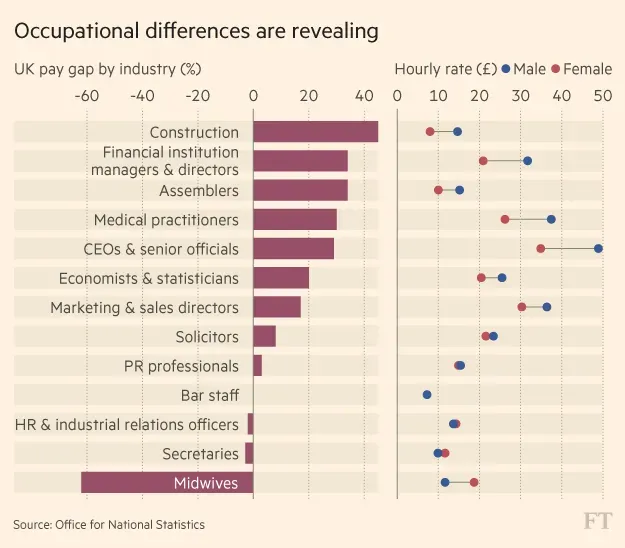The latest Gap earnings report reveals a compelling narrative of resilience amid significant challenges. Despite the looming impact of tariffs from the ongoing trade tensions, Gap has reported strong fiscal results that exceeded Wall Street expectations. With Gap revenue growth at $3.46 billion, the company is strategically navigating through potential losses estimated between $100 million and $150 million, due to new import duties on Chinese goods. CEO Richard Dickson has emphasized the importance of diversifying the Gap supply chain, which is crucial in mitigating the effects of these tariffs. As Gap continues to adapt, investors and consumers alike are keenly watching how these shifts will unfold in the volatile retail landscape.
In analyzing Gap’s financial performance, the focus shifts to its latest quarterly results against the backdrop of increasing import duties and market fluctuations. The apparel giant is facing critical adjustments due to the repercussions of trade policies affecting its supply chain, particularly in relation to its reliance on China. CEO Richard Dickson’s remarks highlight the company’s ongoing efforts to shield itself from tariff impacts and foster sustainable growth within its revenue segments. Additionally, as Gap explores avenues to enhance its product offerings, attention must be paid to how effectively it can maintain momentum while addressing the challenges posed by external economic pressures. Overall, Gap’s narrative is one of endurance, strategic pivoting, and maintaining consumer trust amidst uncertainty.
Overview of Gap Earnings Report
Gap Inc. reported a robust earnings beat with net income for the fiscal first quarter reaching $193 million, or 51 cents per share. This surpassed Wall Street’s expectations of 45 cents per share, showcasing the company’s ability to effectively navigate financial challenges. Revenue also witnessed a positive growth trajectory, totaling $3.46 billion, which is an increase of approximately 2% from $3.39 billion a year earlier, further solidifying Gap’s standing as a formidable player in the retail apparel sector.
Despite the strong performance, Gap’s shares faced a notable decline of over 15% in after-hours trading following the announcement. Investors absorbed the blow of looming tariffs that could shift the company’s financial sands. CEO Richard Dickson articulated confidence in the brand’s performance but acknowledged external pressures, signaling that while earnings are strong, operating margins could face headwinds from rising costs associated with tariffs.
Impact of China Tariffs on Gap’s Business
The newly imposed tariffs have sparked concerns regarding their substantial financial ramifications for Gap Inc. Since the Trump administration’s implementation of a new 30% tariff on imports from China, Gap anticipates costs could soar to between $250 million and $300 million without reference to mitigation strategies. Currently, the company successfully mitigated about half of these costs but still expects a significant dollar figure to materialize on its balance sheet in the latter half of the year, ranging from $100 million to $150 million.
To counteract the impact of these tariffs, Gap is taking decisive steps to diversify its supply chain, reducing its reliance on China. With a strategic pivot, the company plans to source more cotton from U.S. suppliers, demonstrating proactive management in light of escalating trade tensions. Dickson emphasized the importance of strong market positioning, asserting that the company remains committed to providing quality products without substantial price increases for consumers.
Strategic Response to Supply Chain Challenges
In light of evolving trade dynamics, Gap Inc. is actively restructuring its supply chain strategies. This includes efforts to source less than 3% of its products from China by year-end, as the company aims to mitigate the financial burden from tariffs. Under CEO Richard Dickson’s leadership, Gap plans to enhance sourcing from countries with negligible tariff implications, such as Vietnam and Indonesia, where significant portions of their production already occur.
With these strategic shifts, Gap is setting the stage for sustainable growth amidst external pressures. The diversification of suppliers offers the company a buffer against geopolitical risks while allowing it to maintain competitive pricing for consumers. The commitment to adapt supply strategies reflects a forward-thinking approach essential for enduring in the volatile apparel market.
Gap Revenue Growth: Expectations and Challenges
Looking ahead, Gap projects its full-year sales growth to range between 1% and 2%, aligning with market expectations of approximately 1.3% growth. This forecast indicates a stable outlook amid evolving consumer behaviors and economic factors. Despite achieving earnings surpassing analyst predictions, the company expressed caution about a flat sales projection for the current quarter, reflecting the uncertainties posed by external economic pressures.
The anticipated sales performance underscores the challenge of achieving substantial revenue growth in a competitive marketplace. As Gap continues to adapt its strategies and respond to market demands, maintaining investor confidence will hinge on its ability to innovate and attract a broad customer base while addressing the hurdles presented by tariffs and shifting consumer preferences.
CEO Richard Dickson’s Vision for Gap
CEO Richard Dickson has reiterated a proactive vision for Gap as it seeks to navigate the challenges posed by the trade war. His leadership emphasizes the belief that strong brands can thrive in any market scenario. By focusing on brand visibility and market share, Dickson aims to position Gap not merely as a retail entity but as a leader in the evolving apparel sector.
Through strategic initiatives, including brand awareness campaigns and leveraging U.S. cotton sourcing, Dickson aims to enhance the company’s resilience against external trade adversities. His optimistic yet pragmatic approach reinforces the inherent strength within Gap’s brand portfolio, suggesting that while immediate pressures contend with operational strategies, the company is focused on long-term growth and profitability.
First Quarter Performance Highlights
During the fiscal first quarter, Gap’s brands delivered varying performance results. Old Navy, the company’s largest brand, reported sales of $2 billion, indicative of a 3% increase over the prior year, surpassing consensus expectations. This success reflects the brand’s effective positioning within the market and highlights its vital role in Gap’s overall performance strategy.
Conversely, Gap’s namesake brand also enjoyed success with a notable revenue increase of 5% to $724 million, outperforming expectations of 3.4%. However, the athletic-focused brand Athleta faced challenges, with a 6% decline in sales, revealing a need for greater product differentiation and market engagement. As Gap evaluates brand performance, it remains committed to rectifying the lagging sectors while capitalizing on the success of stronger brands such as Old Navy.
Future Guidance amid Tariff Pressures
Despite the seemingly stable growth forecast for Gap, the looming pressures from tariffs introduce a layer of uncertainty. The company’s guidance reflects expectations of gross margins settling at 41.8%, which is slightly below what analysts had projected. The operational adjustments necessary to accommodate these tariffs could complicate profitability metrics for the upcoming quarters.
Understanding the dynamic interplay between cost management strategies and revenue growth will be crucial as Gap navigates these headwinds. The company’s ability to forecast accurately in such a fluctuating environment remains critical for restoring and sustaining investor confidence amidst these related challenges.
Brand Performance: A Comparative Analysis
A breakdown of brand performance reveals distinct trajectories within Gap’s portfolio. Old Navy and Gap brands have shown commendable resilience, with Old Navy posting a 3% increase in comparable sales and Gap’s own sales rising by 5%. In contrast, Banana Republic and Athleta are still grappling with performance issues, suggesting that while some segments thrive, others require a renewed focus to recharge their market presence.
To ensure comprehensive brand revitalization, Gap must prioritize innovation and targeted marketing across its slower-performing segments. With the board’s oversight, strategic initiatives can be implemented to bolster both consumer engagement and brand loyalty, critical components for enhancing overall company growth.
Navigating Market Dynamics in Retail
In the contemporary retail landscape, Gap faces a multitude of market dynamics that demand agility and foresight. Competition is fierce, and with the impact of tariffs and evolving consumer trends, the company must consistently adapt to stay competitive. A keen understanding of market conditions and consumer sentiment will play a pivotal role in crafting the trajectory of Gap’s future success.
By leveraging data analytics and consumer feedback, Gap can refine its strategy and growth initiatives, setting itself up as a responsive and forward-looking retail brand. Close attention to market trends, particularly around consumer preferences, will allow Gap to tailor its offerings more adeptly, ensuring alignment with market demand and strengthening brand loyalty.
Frequently Asked Questions
What were the main highlights of the latest Gap earnings report?
The latest Gap earnings report showcased significant performance, with earnings per share of 51 cents, surpassing expectations of 45 cents. Gap reported revenues of $3.46 billion, exceeding the anticipated $3.42 billion. The company outlined a net income of $193 million for the three-month period, reflecting a strong operational performance despite challenges from new tariffs.
How are China tariffs impacting Gap’s earnings and supply chain?
In its earnings report, Gap estimated that new tariffs from China could cost the company between $100 million and $150 million if they remain in effect. These tariffs pose challenges to Gap’s supply chain, prompting CEO Richard Dickson to announce a strategy to diversify sourcing away from China to minimize financial impacts.
What steps is Gap taking to mitigate the effects of new tariffs on its revenue growth?
Gap is actively mitigating the impact of tariffs through supply chain diversification and reducing its reliance on China. The company plans to increase its cotton sourcing from the U.S. and implement other strategies aimed at maintaining revenue growth and limiting potential price increases.
How did Gap’s first-quarter revenue perform compared to expectations?
Gap’s first-quarter revenue of $3.46 billion exceeded Wall Street expectations of $3.42 billion, marking a 2% increase from the previous year. This strong performance, despite external pressures such as tariffs, underscores the brand’s resilience in a competitive market.
What future guidance did Gap provide regarding sales and earnings growth?
In the earnings report, Gap indicated a full-year sales growth forecast of 1% to 2%, aligning with market expectations. However, for the current quarter, the company expects flat sales, which is slightly below analysts’ predictions of mild growth.
How is Gap managing its exposure to tariffs in its business strategy?
Gap is reducing its exposure to tariffs by diversifying its production sources. As part of its strategy, the company is shifting sourcing away from China, that currently represents less than 10% of its products. Gap aims to further lower this figure, anticipating it will drop below 3% by year-end.
What was the impact of new tariffs on Gap’s gross margin forecast?
The new tariffs have pressured Gap’s gross margin, which is now projected to be 41.8%, falling short of the 42.5% expected by analysts. This adjustment is primarily attributed to a shift away from benefits seen in the previous year, rather than the direct impact of tariff costs.
What challenges are Gap’s brands facing as reported in the earnings statement?
Gap’s brand performance varies: while Old Navy and the Gap brand reported solid sales increases, Banana Republic and Athleta faced challenges with declining sales. The company is focused on enhancing product offerings for these brands to engage customers better.
What is the potential impact of future tariffs on Gap’s income?
The potential for future tariffs remains a concern, particularly with an anticipated reciprocal tariff rate of 46% on Vietnam, where Gap sources a significant percentage of its products. Such tariffs could adversely affect Gap’s income if implemented.
Who is Gap CEO Richard Dickson and what has he communicated regarding earnings and tariffs?
Richard Dickson, CEO of Gap, has communicated a positive outlook on the company’s earnings despite the challenges posed by tariffs. He stated that Gap does not expect meaningful price increases for consumers and is confident in the strength of its brand to capture market share.
| Key Points | Details |
|---|---|
| Earnings Performance | Reported earnings per share of 51 cents, exceeding expectations of 45 cents. Revenue reached $3.46 billion, also above the anticipated $3.42 billion. |
| Impact of Tariffs | Gap estimates the tariff costs to be between $100 million and $150 million, down from $250 million to $300 million before mitigation efforts. Plans to reduce reliance on Chinese manufacturing. |
| Brand Performance | Old Navy grew sales by 3% to $2 billion, Gap brand rose 5% to $724 million, while Banana Republic and Athleta faced declines. |
| Future Guidance | Full-year sales expected to grow 1%-2%, flat sales projected for the current quarter. Gross margin forecast weaker than expected at 41.8%. |
Summary
The latest Gap earnings report reveals that while the company has delivered a strong performance that exceeded market expectations, challenges from tariffs and supply chain issues due to President Trump’s trade war significantly impact its financial outlook. Gap’s proactive measures to mitigate tariff costs demonstrate its commitment to maintaining strong brand performance and navigating a complex retail landscape. As the company seeks to diversify its supply chain and reduce dependence on China, its strategic focus on the U.S. market may play a crucial role in sustaining its growth trajectory amidst external pressures.



